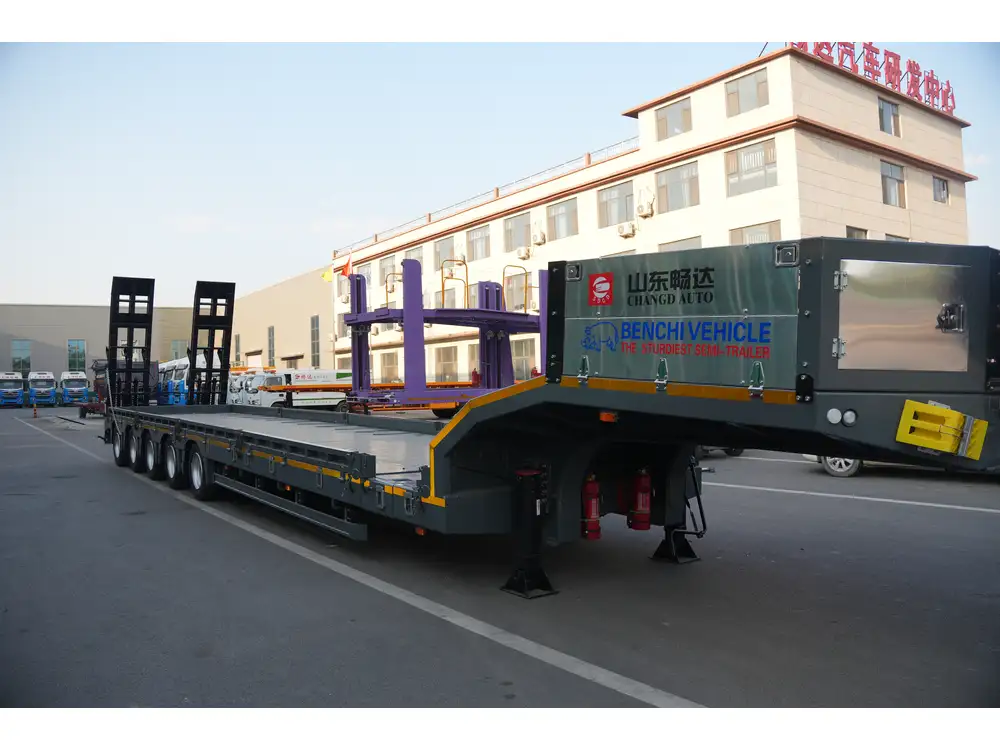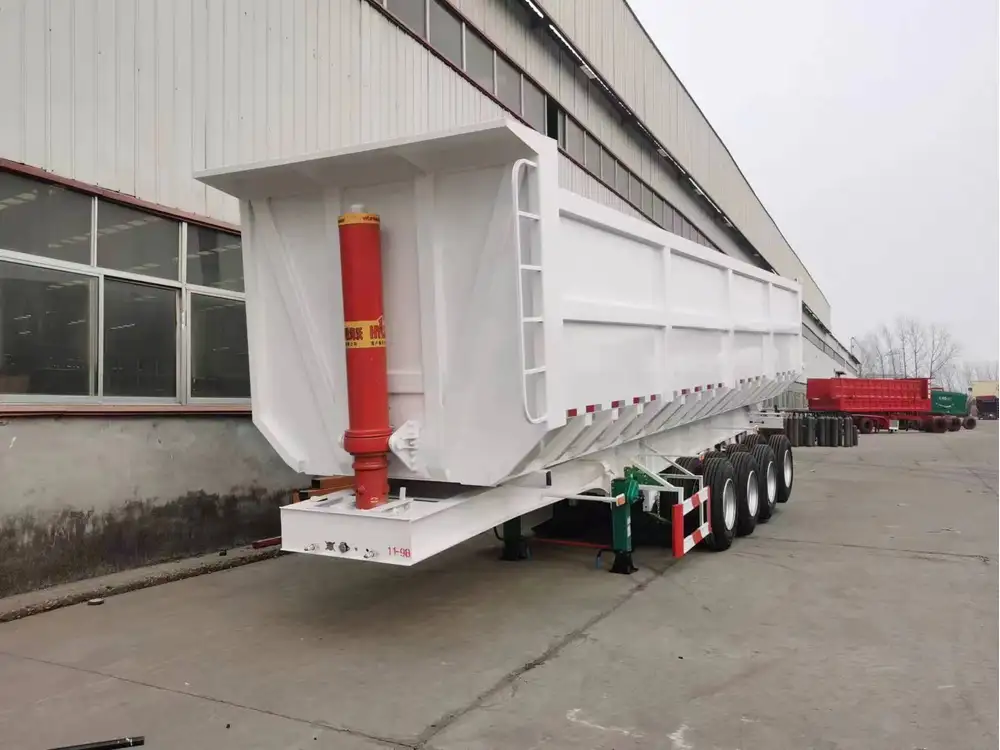When it comes to enhancing the functionality of your utility trailer, converting it into a dump trailer is a popular and practical option. Dump trailers offer unparalleled convenience, making transporting heavy loads and unloading materials a more efficient task. In this detailed guide, we will walk you through the intricacies of converting your utility trailer into a dump trailer, addressing frequently overlooked considerations while providing in-depth insights into each step.
Understanding the Differences: Utility Trailer vs. Dump Trailer
Before we dive into the conversion process, it’s essential to grasp the fundamental differences between utility trailers and dump trailers.
| Feature | Utility Trailer | Dump Trailer |
|---|---|---|
| Purpose | General hauling of goods and equipment | Hauling and unloading materials easily |
| Loading Mechanism | Manual loading with ramps or by hand | Hydraulic lift mechanism for easy unloading |
| Weight Capacity | Varies, usually lighter weight | Heavier weight capacity for bulky loads |
| Frame Design | Open frame with sides | Box-like design with a removable tailgate |
| Cost | Usually lower cost | Higher cost due to hydraulic systems |
Essential Tools and Equipment Needed
Equipping yourself with the right tools simplifies the conversion process significantly. Below is a comprehensive checklist of tools and materials you will need:
Tools:
- Socket set and torque wrench
- Welding machine (MIG or TIG)
- Angle grinder
- Drill and various drill bits
- Screwdrivers (flathead and Phillips)
- Safety goggles and gloves
- Measuring tape
- Level
Materials:
- Hydraulic lift kit (cylinders, pump, and related hardware)
- Steel frame tubing (for additional structural support)
- Reinforced plywood or metal sheeting (for the dump box)
- Electrical wiring (for the hydraulic pump)

Step-by-Step Conversion Process
Step 1: Remove the Existing Floor
Begin the conversion process by removing the existing floor of your utility trailer. This step allows you to assess the underlying structure and make necessary reinforcements. Use the angle grinder to cut the floor out, ensuring that you do not damage the frame.
Step 2: Reinforce the Frame
Given that dump trailers need to withstand greater stress due to their unloading mechanism, reinforcing your utility trailer’s frame is critical. Employ heavy-duty steel tubing to strengthen the frame. Key areas to reinforce include:
- Corners: Adding brackets or additional support beams can prevent warping.
- Center Beam: Increase the strength of the central support to handle the lifting force.

Step 3: Install the Hydraulic Lift System
Installing the hydraulic lift system is the cornerstone of your conversion:
- Choose the Right Hydraulic Kit: Select a hydraulic lift kit compatible with your trailer size and the loads you intend to haul.
- Installation: Tracing the manufacturer’s instructions is vital. Begin by mounting the hydraulic cylinder to the trailer frame, ensuring it is securely fastened and aligned.
- Pump Installation: Position the hydraulic pump in a convenient yet safe location. Connect it to the cylinder and ensure all hydraulic lines are securely attached and leak-free.
Step 4: Create the Dump Box
Construct the dump box out of durable materials, ensuring it is large enough to accommodate your intended load. Use reinforced plywood for budget-friendly options or steel sheets for increased durability. Follow these steps:
- Cut the Material: Clearly measure and cut the material to fit your trailer’s dimensions.
- Assembly: Assemble the walls of the box and attach them securely to the frame.
- Tailgate Installation: Adding a removable or foldable tailgate allows for easy loading and unloading.
Step 5: Electrical Wiring and Control System
Integrating a reliable control system for the hydraulic pump is vital. Follow these steps:
- Wiring: Connect the pump to a power source, typically your vehicle’s battery. Use a fuse to prevent potential electrical issues.
- Controls: Install a toggle switch or remote control system that allows for intuitive operation of the hydraulic lift.

Step 6: Safety Checks
Ensuring the safety of your newly converted dump trailer is paramount. Consider the following checks before usage:
- Hydraulic System: Test for leaks and ensure proper pressure levels.
- Electrical System: Confirm all connections are secure and operate as intended.
- Frame Integrity: Look for any signs of structural weakness.
- Load Testing: Perform a controlled load test to verify the trailer handles weight appropriately.
Maintenance Tips for Your Dump Trailer
Maintaining your dump trailer is essential for prolonging its lifespan and ensuring safety. Here are some effective maintenance tips:
- Routine Inspection: Regularly check hydraulic lines for wear and tear, and inspect electrical connections.
- Cleaning: Keep the trailer clean to prevent rust and debris accumulation that can impede functionality.
- Lubrication: Ensure moving parts of the hydraulic system are adequately lubricated to minimize friction and wear.
- Storage: When not in use, store your trailer in a dry, covered area to protect it from the elements.
Frequently Asked Questions (FAQs)

What types of loads can a converted dump trailer handle?
A converted dump trailer can handle various loads, including landscaping materials, construction debris, and general waste. However, always consider the weight capacity of your trailer assembly to prevent damage or safety hazards.
How do I determine the weight capacity of my converted trailer?
To determine your converted trailer’s weight capacity, consider the original weight rating of your utility trailer, the added weight from the hydraulic system, and the materials used in constructing the dump box. Always adhere to the lowest weight rating to ensure safety.
Is it advisable to undertake this conversion on my own?
While DIY approaches can save costs, it’s essential to have a clear understanding of welding, hydraulics, and electrical systems. For those inexperienced, consulting or hiring a professional ensures higher safety standards and reliability.

What are the benefits of using a dump trailer over a traditional utility trailer?
A dump trailer’s primary advantage is its ability to unload materials efficiently, saving time and labor. This makes it particularly beneficial for landscaping, construction, and rental businesses.
Can I also convert my dump trailer back to a utility trailer when needed?
Yes, with careful planning and modular design in your conversion, you can modify your dump trailer back into a utility trailer. Ensure that the hydraulic system is removable and that modifications do not permanently alter the trailer structure.
Conclusion
Converting a utility trailer to a dump trailer opens new avenues for efficiency and utility in your hauling tasks. By implementing a systematic approach and adhering to safety measures, we can create a customized solution tailored to our specific needs. The benefits of such a conversion can significantly expedite operations, elevate value, and enhance versatility, making this endeavor a worthwhile investment.
Whether you are embarking on a DIY project or contemplating a professional service, informed decisions will ensure the successful conversion of your utility trailer into a proficient dump trailer. Equip yourself with the necessary knowledge, and proceed forth into the world of efficient hauling ready to tackle any task with your newly enhanced equipment!



